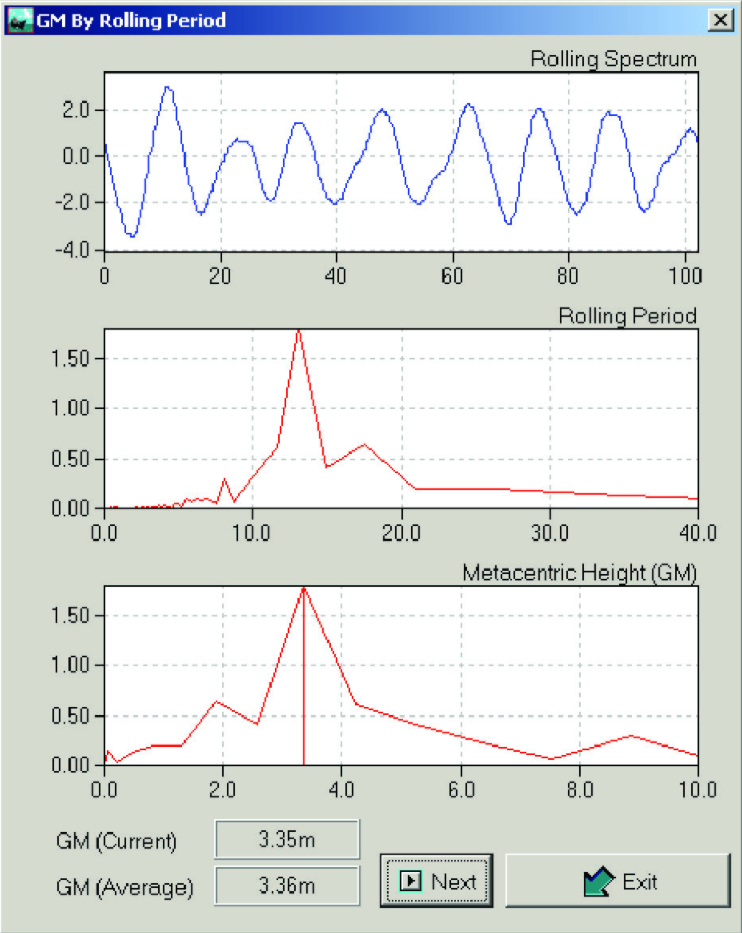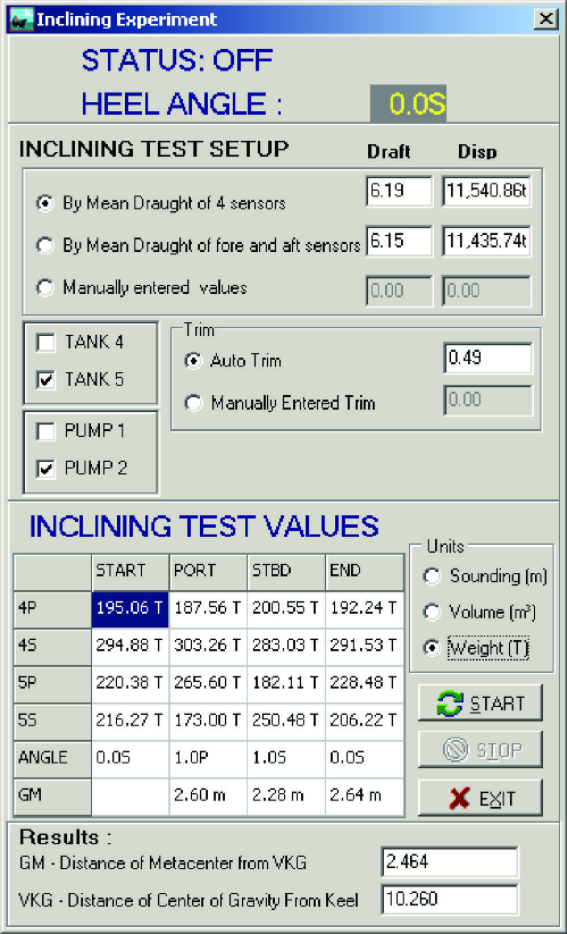Online Stability
Container ships and Car Carriers can be at risk of losing stability due to wrong cargo values. IMACS2020, Totem Plus automation system allows measurement of GM onboard to keep vessel safe at all times:
Introduction
The focus in this article will be on determination of Transverse Stability parameters (GM) either before departure or during the voyage. The analysis is done automatically, without any input or assumptions by the user, as a tool for increasing safety. This feature is important on any vessel, but especially on car carriers, container ships and similar vessels where the amount of cargo is based on shore declaration and not on measured values.
The risk of wrong assumptions
Wrong cargo figures are not as common as they used to be when the container trade started, but nevertheless they pose a great risk. Wrong information can come from many sources such as shippers declaring false weights, terminals (loading different containers than planned), planners, stevedore companies, tally companies etc. Needless to say, the huge risk to seafarers from a situation where the stability parameters are wrong cannot be over emphasized, and calls for determination methods that will not depend on any assumptions.
Stability determination prior to sailing
A prudent captain will not go to sea without checking his stability. Accurate calculations of stability parameters, mostly done with the aid of a loading computer, are a mandatory procedure. To determine if the results of these calculations are correct, and to verify that the stability of the vessel is not jeopardized by a different weight distribution, Totem Plus IMACS offers the solution: the operator can perform a quick “inclining experiment”, which will be carried out automatically as described here.
Inclining Experiment
The inclining experiment method for determining the Metacentric Height (GM) is used while the ship is docked, after the cargo operations are completed and just before sailing. The principle behind this method is that by shifting a known amount of weight across the ship (by using the ship’s ballast system), and measuring the resulting heel angle the Metacentric Height (GM) can be calculated directly. The result depends on the displacement of the vessel, which can be determined exactly from the measured draft. The operator can decide between few options, like the number of ballast tanks and pumps used and the method to determine the displacement from the draft. After the test is performed the calculated VKG and GM are displayed.
Stability determination while sailing: rolling period
The risk to ships from losing stability during a voyage at sea can emanate from many factors, including unknown flooding of compartments or human errors. Knowing the stability parameters (GM) at all times is therefore of utmost importance. Furthermore, such information can help in avoidance of parametric rolling in rough weather. This method for calculating GM is performed while the vessel is at sea. The ship’s rolling angle (caused by wave and wind forces acting on the ship’s hull) is constantly monitored. Advanced mathematical algorithms are applied to the data to deduct the rolling period and the meta centric height (GM). This process is performed continuously, in real-time, and provides a visual representation of changes in GM over time.


